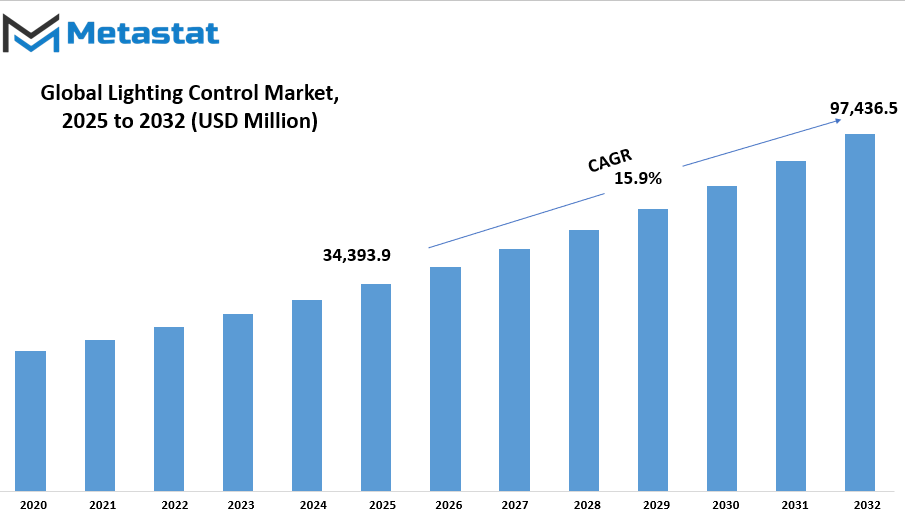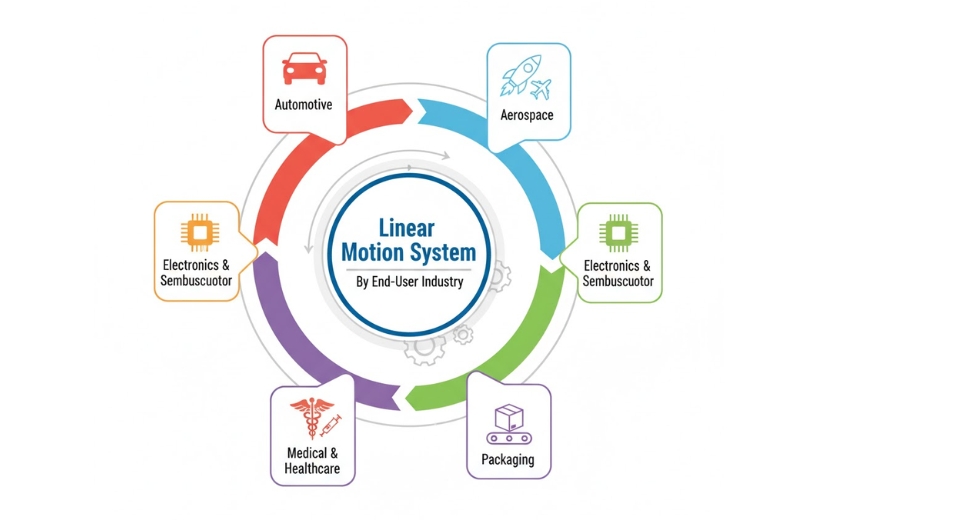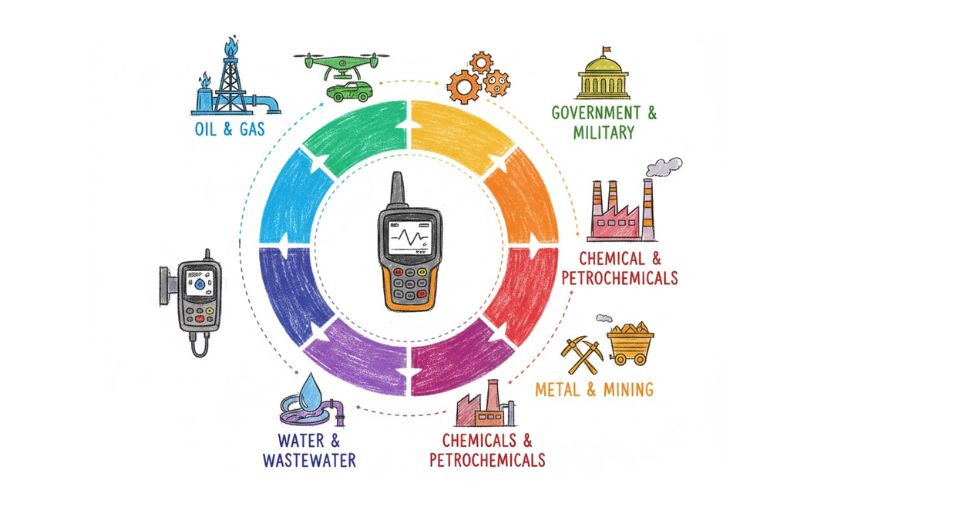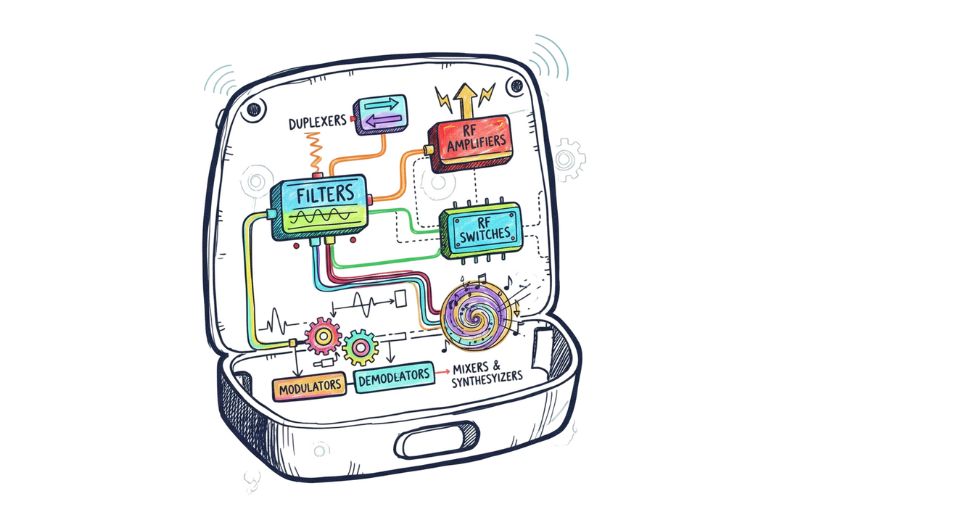MARKET OVERVIEW
The Global Lighting Control market is sitting at a busy crossroads of new development, system integration, and energy awareness in the electrical and electronics industries. Its thrust the path beyond applications built conventionally is slowly being taken up by public and private stakeholders, and so as they become attracted to the market, its future appears promising beyond conventional functions. The lighting systems have been learned with respect to illumination, and now they have adopted approaches to safety, productivity, and user experience enhancement, changing the way the future of infrastructure will communicate with technology.
The Global Lighting Control market will not just focus on intelligent homes or office buildings. It is destined to stretch beyond all these towards other sectors such as health, agriculture, and education, with lighting meant for more significant roles than just visibility. Automatic adjustment according to the needs of patients or improvement of circadian rhythm will exemplify lighting systems integrated into hospitals. For example, horticultural conditions match growth periods and other environmental factors with lighting designed to boost production output. Lighting will also be set in educational institutions to adapt to the time of the day and activities performed to enhance cognitive performance.
The major contributor to this progress will add lighting data analytics. The lighting networks will act as sensors tracking occupancy, environmental data, or asset movements. This way, companies will not see these systems only as power-saving solutions; they will consider them as tools for business intelligence. Lighting will become the channel through which buildings will communicate, store information, and carry out data-driven operations. This "bright" transition will create new alliances among lighting companies, IT providers, and infrastructure developers, thus changing competitive ground in the industry.
Next-generation lighting controls will heavily depend on decentralization and interoperability concepts. The centralized systems will be replaced with adaptable networks connecting devices from different manufacturers for seamless communication. This will open a broader customization and more adaptable environments. Whether it's for retail or transportation or government infrastructure, lighting systems will work independently but communicate with each other through advanced protocols and edge computing. The move to decentralization will only increase adaptation to increased flexibility rather than handheld proprietary formats, thereby changing product designs and software development.
The Global Lighting Control market will also see serious integration into city planning. It will be adopted by municipalities because, apart from energy consumption reductions, they will also manage the traffic flow, detect security threats, and organize the schedule maintenance.
Global Lighting Control market is estimated to reach $97,436.5 Million by 2032; growing at a CAGR of 15.9% from 2025 to 2032.

GROWTH FACTORS
Focus on Sustainability and Energy Efficiency for Green Lighting Control Having been hit by the efforts from both individuals and industries to rationalize electric energy consumption, the urge for such power-saving systems without necessarily restricting comfort tends to rise. Lighting control systems allow people to manage light in its smarter way, reduce electricity use and save on utility bills. These systems are essential in the big buildings and offices, and it can also be used at home where lights are often left on. Lighting controls use sensors, timers, dimmers, etc., to reduce wastes and make overall energy management much better. The government has strict regulations and also sets a new building standard in conformity with the energy-saving methods.
On the other hand, some issues can pose constraints in propelling the market forward. One of the primary concerns has been the challenge of integrating a lighting control system with existing infrastructure. Often, buildings were designed without provisions for these systems; thus, implementing them on-site becomes costly or complicated. This can dissuade those interested, such as small businesses and homeowners. The lack of awareness among the people who would be targeted by these systems also has a fright. People still do not understand how lighting controls function and how much they save eventually. Without education and advocacy, users would be in darkness about investing in new technology.
Notwithstanding all this, the market itself has some very strong cards up its sleeve for considerable growth, especially in household locations. With the proliferation of smart homes, residents are looking for avenues with which to bring more comfort and energy efficiency to their homes. The added convenience of lighting control systems is that they can come with simple solutions controlled from smartphones or voice assistants. The systems make life more convenient while ensuring that it is easier for users to take their steps towards becoming greener. They are extremely attractive for many homes within the comfort and savings they offer.
On the whole, with such nuisances that the Global Lighting Control system has to deal with, it is moving in a progressive direction. It is definitely going to increase the rate at which people adapt to modern living because people are getting more aware of the energy they use and thus makes sense to have sustainable living. Education and better integration methods will go a long way in unlocking the entire potential of this market in the years ahead.
MARKET SEGMENTATION
By Offering
Because of rising inclination towards energy-efficient solutions and smarter infrastructure, the common Global Lighting Control market is on an upward trajectory. Lighting control systems constantly gain traction for businesses and governments as well as homeowners in seeking ways to reduce energy and operational expenses. Occupancy, time of day, or daylight availability determine these automatic settings for levels of lighting. By doing this, it saves energy and also improves comfort and productivity in different spaces like workplaces, industries, schools, or houses.
The range of the market segments further into Hardware, Software, and Services. Hardware holds a very substantial proportion among them, having a value of $19618.3 million. This segment is made up of working devices such as sensors, switches, dimmers, and controllers that work together in regulating lighting. The popularity of the LED has accounted for the growing division on hardware, as it fits best with the new-age control systems. Hardware is therefore essential for new installations and retrofitting projects and is thus assumed as the primary aspect in lighting control for most end users.
Another major segment is Software; it provides the end-user programming, monitoring, and adjusting of lighting through applications or centralized platforms. The booming market of smart buildings along with augmentation of IoT integration has brought these software aspects into the spotlight. Such software allows remote access and automation for lighting management across vast scopes such as a large building or campus. Also, with such capabilities of analyzing data and optimizing lighting performances, this segment is considered a boon, especially for the commercial space, where the main focus is operational efficiency.
Services in a market are installation, maintenance, consultation, and upgrade system. These cover-all services will permit the lighting systems to keep functioning well in the future without compromising the customer's specific need. With the trends in technology, many organizations rely on professional assistance in updating and maintaining system efficiency and performance. This means, a greater bulk of demand for services that increase and lengthen the service of lighting control solutions.
This mix of environmental concerns, cost-saving initiatives, and a shift toward automation fuels the overall Global Lighting Control market. The transformation in technology and a continuous rise in awareness regarding energy use are expected to generate demand for smart lighting solutions in the near future. Be it hardware, software, or support service, this most exciting technology will continue to redefine lighting management within different spaces.
By Communication
The Global Lighting Control market is growing steadily due to the rise in energy efficiency and smart technologies. The demand for lighting control solutions has even surged as more potential users have targeted the reduction of energy bills and sustainable environments. Lighting control systems work effectively in the management of light used in homes, offices, and commercial spaces that allow fine adjustment in brightness, timing, and other settings. This not only aids in energy conservation but also improves comfort and productivity. Rather, there are government initiatives in various parts of the world stimulating the market for reduced energy products and convincing consumers and enterprises alike to incorporate advanced lighting control systems.
The market, due to communication, is divided into wired and wireless systems. Wired systems are historically known for their reliable performance for decades and in most cases are adopted in large buildings and infrastructure installations where reliability is of utmost importance. Wired systems are those requiring hard cabling for wiring, meaning they less likely to be interfered with. The downside, of course, is that installation can be intrusive, rather costly, and, most importantly, in older buildings, time-consuming, since it may need some renovation to enable fitting the wiring. Despite such challenges, wired solutions are still eminently viable for projects which need a long-lasting solution.
Nowadays, wireless lighting control systems are favored by many due to the flexibility they give in installation and renovation. Installers can complete jobs without a need for time-consuming, disruptive wiring work; and are therefore often found in homes, small enterprises, and rehabilitation centers. These use Wi-Fi, Bluetooth, or Zigbee technologies to allow users to control lighting from a smartphone or voice assistant. While the much prized speed and accuracy of signal transmission do occasionally suffer a temporary glitch while on track, wireless technology has become better and better to date, giving more confidence in performance than less.
The choice among users for either the wired or wireless system is usually determined by their specific needs and the kind of building in consideration. In this case, a brand-new commercial building may find a benefit from a wired setup, given its scale and the need for constant operation, while a homeowner may consider a wireless system a little bit more of a pleasant experience and thus less cost prohibitive. Both systems will continue to play a significant role in viewing into the future of lighting control. The emergence of more smart buildings paired with the improvement in technology spell that more opportunities and desirable features will continue to stream forth to both the wired and wireless lighting control systems market.
By Application
The Global Lighting Control Market is moving ahead steadily, with industries, businesses, and homeowners realizing the increasing importance of energy efficiency with smart technologies. Application is one of the major ways in which the market is categorized. These applications will define the way and manner in which the different lighting control systems are used, and each area will have its unique role to play in shaping demand for such technologies.
Lighting control systems have a major applicational market in commercial buildings. Examples of commercial buildings that rely on controlled lighting are offices, retail spaces, hospitals, and schools. Such buildings use controlled lighting to achieve safety, cost savings, and comfort. These systems combat unnecessary energy consumption through the utilization of motion sensors, timers, and dimmers, thus lowering electricity bills. In huge office buildings, while providing aesthetic appeal, automated lighting systems also give rise to a productive atmospheric environment, especially since they are aided by natural daylight.
The industrial sector is also a very important market segment. This refers to manufacturing plants, warehouses, and manufacturing units where an extensive and reliable lighting system is required to enhance safety and efficiency. With the aid of lighting control systems, these facilities avoid wasting energy consumption during non-productive off hours and use high-intensity lighting only during requirement. Frequently, these systems are included in bigger automation systems, which give a much higher value to these systems.
Another prominent area of application is in resident houses. Smart lighting systems are revolutionized for convenience and customization, so many more people have started choosing smart lighting systems to control their lighting through the mobile app or by voice commands. People prefer these systems whether in setting the mood in their living room or switching off the light from miles away. They're a lot more practical and save energy in everyday living.
Highways and roads also use lighting control systems for visibility improvement and safety on the roads. Streetlights that adjust brightness depending on the time of the day or traffic flow help cities save power while at the same time lighting the roads appropriately. Such systems can even detect any faults or outages and alert city workers for quicker repairs. It has put more focus on coming smart cities; hence lighting control becomes an integral part of planning urban areas.
Overall segmentation of Global Lighting Control Market by application helps to identify the various ways that technology is harnessed. From commercial buildings to industrial settings, from homes to public roads, intelligent control will find smarter and more efficient ways of managing light. And as the demand increases, so will each application shaping the future of this market.
By Installation
Global Lighting Control market segmentation by installation is divided into indoor and outdoor. The value of lighting systems may vary due to the differences in their application in a particular setting. Indoor lighting control systems include the use of lighting within homes, offices, commercial buildings, and boilers. Two highly centric applications are comfort and energy saving. Indoor lighting is very adjustable for a better flexible-created condition. For instance, lighting based on the availability of natural light over a day is quite useful in reducing electricity consumption while boosting employee well-being. The growing popularity in smart lighting solutions at residential places is that they can operate through mobile apps or voice assistants, creating effortless efficiency in daily living.
Contrarily, outdoor lighting control covers street lighting, lighting for parking lots, stadiums, and public spaces. This is primarily safety and security improvements at a lower energy cost. Most outdoor systems depend on motion or ambient light sensors to activate lighting when required. Hence, cities and even industries can cut their power bills while contributing to global energy savings. With automated street lighting, for example, local authorities can centrally manage lights, detect faults more quickly, and respond even faster to problems.
With expansion into the cities and the smart buildings that are coming up, both indoor and outdoor lighting controls will be made more sophisticated with time and eventually widespread usage. Increasing demands for energy-efficient solutions, along with governmental assistance for sustainable development, will keep pushing the market forward. Lighting building control systems, now being part of many building projects at the start, ensure adherence to modern standards of comfort, efficiency, and ultimately cost savings.
The manufacturers along with the technology company are working on lighting control products that are simple and easy installations and uses. Wireless systems are gaining importance for their ease of delivery without major renovations in the existed structures, paving the way for a smart adult building.
The light control market is steadily growing. Indoor and outdoor installations provide additional advantages. An increasing number of people and businesses are turning to smart lighting solutions to save energy and make life more comfortable. This shift is gradually shaping a more efficient and connected future.
|
Forecast Period |
2025-2032 |
|
Market Size in 2025 |
$34393.9 million |
|
Market Size by 2032 |
$97436.5 Million |
|
Growth Rate from 2025 to 2032 |
15.9% |
|
Base Year |
2024 |
|
Regions Covered |
North America, Europe, Asia-Pacific, South America, Middle East & Africa |
REGIONAL ANALYSIS
Lighting Control has been a rather slow-moving market around the world, with different regions exhibiting different levels of demand and development. It includes North America, Europe, Asia-Pacific, South America, and the Middle East & Africa. North America comprises the U.S., Canada, and Mexico. Advancements in technological solutions along with the adoption of smart systems have made this region grow faster. The U.S. leads because most of its commercial and residential sectors are interested in energy-efficient solutions. Canada and Mexico are catching up, and adoption is strongly driven by the general need for more sustainable lighting systems.
Europe has UK, Germany, France, and Italy standing out as the focused markets along with the rest of Europe. These countries run their own initiatives for promoting energy saving. Government policy, awareness, and smart city projects would enable a push forward for Europe. Growth in energy saving has been huge in Germany and the UK and has been attributed mainly to the industrial growth and the stringent rules on energy usage. France and Italy are also registering their progress, with significant investment in lighting upgrades coming from both public and private sectors.
Asia-Pacific has a good rise in interest and development regarding lighting control technologies. This area encompasses all of India, China, Japan, South Korea, and the rest of Asia-Pacific. Leading this segment are China and Japan due to urban development and government support in smart infrastructure. On the other hand, India has been showing remarkable progress because of the modernization of its cities and demand for power-efficient solutions. With advances in smart home technologies and improved connectivity, South Korea also contributes to the growth of the region.
South America, comprising Brazil, Argentina, and the rest of South America, is progressing slowly yet gives promise. Brazil is the greatest contributor of this region as the increasing construction project and commercial development further fuels demand for advanced lighting control systems. Argentina shows its signs, although on a smaller scale.
The regions of the Middle East & Africa can be grouped into GCC Countries, Egypt, South Africa, and the rest: other countries within this category would fall under other Middle East & Africa. The investment being made in all GCC is quite large, which includes UAE and Saudi Arabia, and huge modern infrastructures rely on lighting solutions. Egypt and South Africa are also on board as the respective governments are already drafting plans on improving energy consumption through lighting control systems. All the regions generally contribute to the overall growth of the global market.

COMPETITIVE PLAYERS
One of the accelerating markets in the economy today is the Global Market of Lighting Control, which is primarily growing based on the latest increasing smart lighting systems in residential, commercial, or industrial spaces and the resulting demand for energy-efficient solutions. More people exhibit awareness of the benefits attributed to energy savings and automation, thus driving the market.
These systems help in cutting down energy consumption as users have options of controlling it depending on occupancy, time schedules, and daylight availability. This brings a convenience of controlling it not within the premises but even remotely through smartphones or voice-activated systems thus encouraging even more people to apply these technologies in their lives.
The market is also shaped and innovated up by several key players including ABB Ltd, Legrand Group, Eaton Corporation Plc, and Leviton Manufacturing Co., Inc. All these prominent companies are known to furnish people with fine, reliable, and familiarized lighting control systems. Schneider Electric and Honeywell International Inc. are also major contributors who provide integrated solutions linking lighting into building management systems. Acuity Brands Inc. and Signify Holding concentrate keenly on producing smart lighting products which are stylish yet functional, making them the top choices in contemporary architecture and interior design.
Control4 Corporation and Crestron Electronics, Inc. provide cutting-edge automation which is usually within luxury homes and commercial settings where tailored control plays an important role. Another significant player in the market is Lutron Electronics Co., Inc., well known for its dimming systems as well as smart lighting controls which provide enhanced comfort and convenience. Synapse Wireless and Pharos Architectural Controls, Ltd. serve the need for high-end wireless and network lighting control solutions, particularly for large buildings and outdoor applications.
LIGMAN Lighting Co., Ltd. and Feilo Sylvania International Group Kft. are active, too, providing lighting controls for applications with both aesthetics and applications. Such firms keep pouring in their finances further towards R&D to justify the rising expectations and the continuously changing technology trends.
Overall, the lighting control market continues to evolve with the most dynamic driving forces of sustainability, energy savings, and enhanced user experience. From the continuous improvements in wireless technology, artificial intelligence, and again the Internet of Things, lighting control systems will further develop, bringing lighting design into the regular homes and businesses of tomorrow. The companies mentioned are expected to be very much involved in the present future shaping of lighting towards being more intelligent, efficient, and user-friendly.
Lighting Control Market Key Segments:
By Offering
- Hardware
- Software
- Services
By Communication
- Wired
- Wireless
By Application
- Commercial Buildings
- Industrial Facilities
- Residential Buildings
- Highway and Roadways
By Installation
- Indoor
- Outdoor
Key Global Lighting Control Industry Players
- ABB Ltd
- Legrand Group
- Eaton Corporation Plc
- Leviton Manufacturing Co., Inc.
- Schneider Electric
- Honeywell International Inc
- Acuity Brands Inc.
- Synapse Wireless
- Control4 Corporation
- Signify Holding
- Crestron Electronics, Inc.
- LIGMAN Lighting Co., Ltd.
- Lutron Electronics Co., Inc
- Pharos Architectural Controls Ltd.
- Feilo Sylvania International Group Kft.
WHAT REPORT PROVIDES
- Full in-depth analysis of the parent Industry
- Important changes in market and its dynamics
- Segmentation details of the market
- Former, on-going, and projected market analysis in terms of volume and value
- Assessment of niche industry developments
- Market share analysis
- Key strategies of major players
- Emerging segments and regional growth potential







 US: +1 3023308252
US: +1 3023308252






